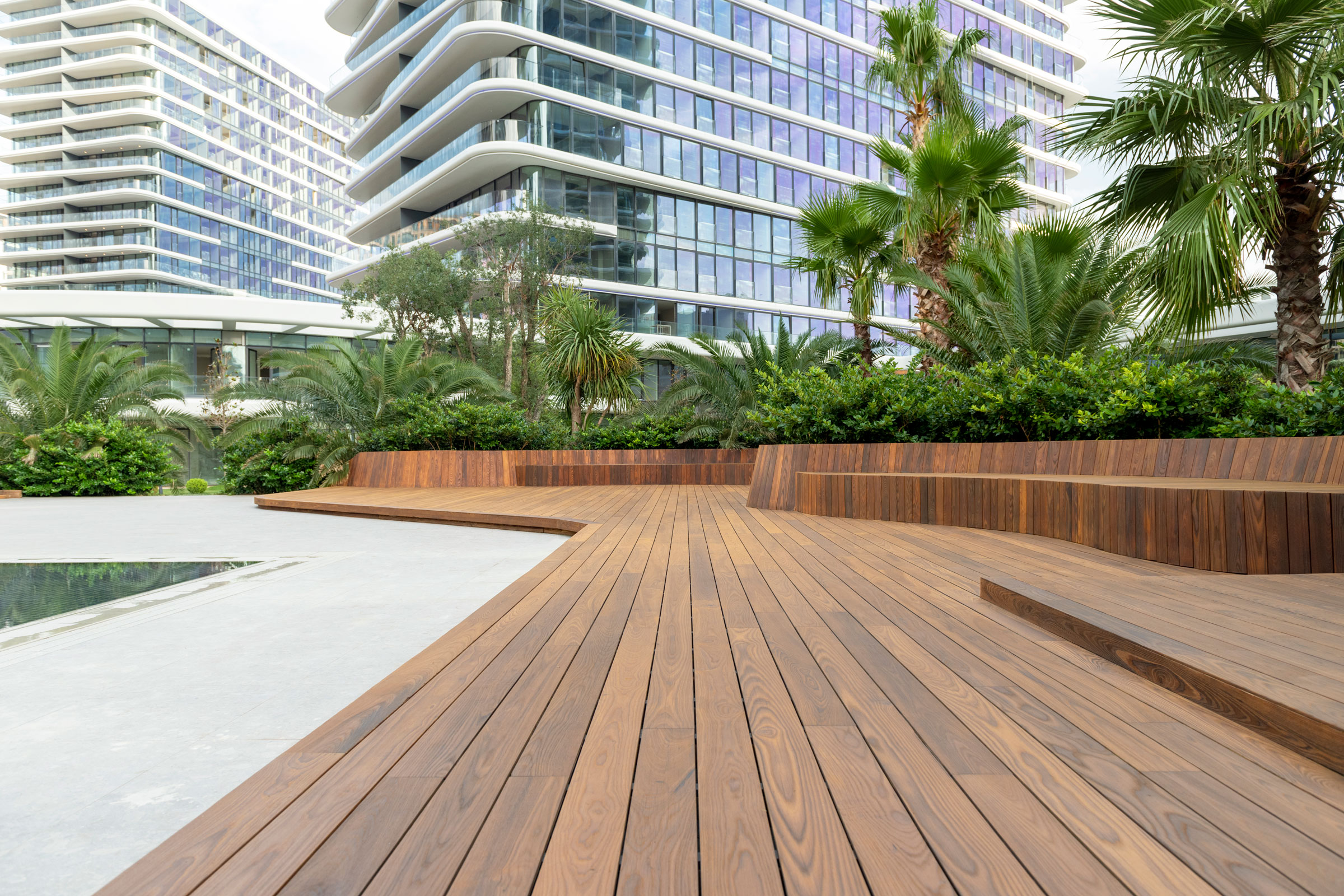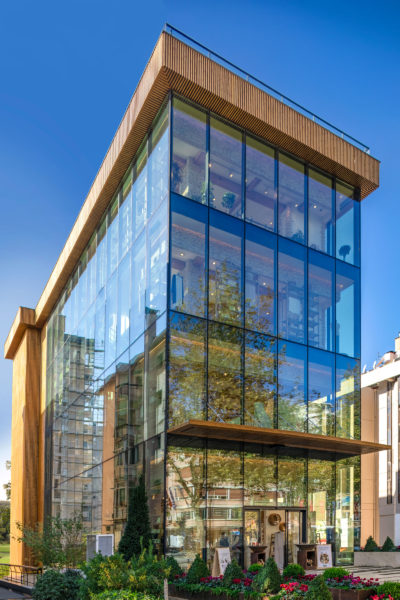Story at a glance:
- Tantimber’s ThermoWood products add life to places and value to projects.
- Choose from sustainable, thermally modified decking, siding, louvers, interior decorative wall coverings, laminated beams, and pergolas.
- The ThermoWood process removes moisture and organic compounds to leave the wood very strong.
Wood has been an essential resource long used in green building, but there’s one problem: It changes over time. Wood expands, contracts, and adapts to its environment just as trees in a forest do. It’s a living material, which means that while it’s reliably eco-friendly, it isn’t reliable enough to stand the test of time.
The good news is that you don’t have to forsake the look, feel, or sustainability of wood for a less desirable, less green material. In fact, you don’t have to forsake the benefits of wood at all with ThermoWood.
Tantimber offers a unique line of sustainable, thermally modified decking, siding, louvers, interior decorative wall coverings, laminated beams, and pergolas that are manufactured using a cutting-edge ThermoWood process. The patented process starts with moving FSC-certified sawn timber to a kiln for high temperature drying. The temperature inside the kiln is raised to 212°C to prevent cracking. The moisture content of the wood is reduced to absolute zero.
Then the high temperature is maintained, which changes the wood chemically and physically, gives it its brown color, and removes harmful extractives. After high-temperature drying, the temperature is decreased by using steam and water. The moisture content of the wood is controlled to ensure end-products contain moisture levels from 4 to 7%, improving the wood’s dimensional stability and durability without the fear of cracking. This whole process can last up to 110 hours.
“ThermoWood is not your standard thermal modification process that everyone talks about in the industry. It’s different. It’s better. It’s not for everyone,” says Mehmet Zenginler, cofounder and managing partner of G Wood Pro, the exclusive distributor of Tantimber ThermoWood products in the US. “It’s the best natural wood product available that can be used for both exterior and interior applications.”
We recently talked to Zenginler about the benefits of ThermoWood—and how using the material can create structures with a long-lasting impact, both in design and on the environment.
1. Thermally modified wood is exceptionally durable.
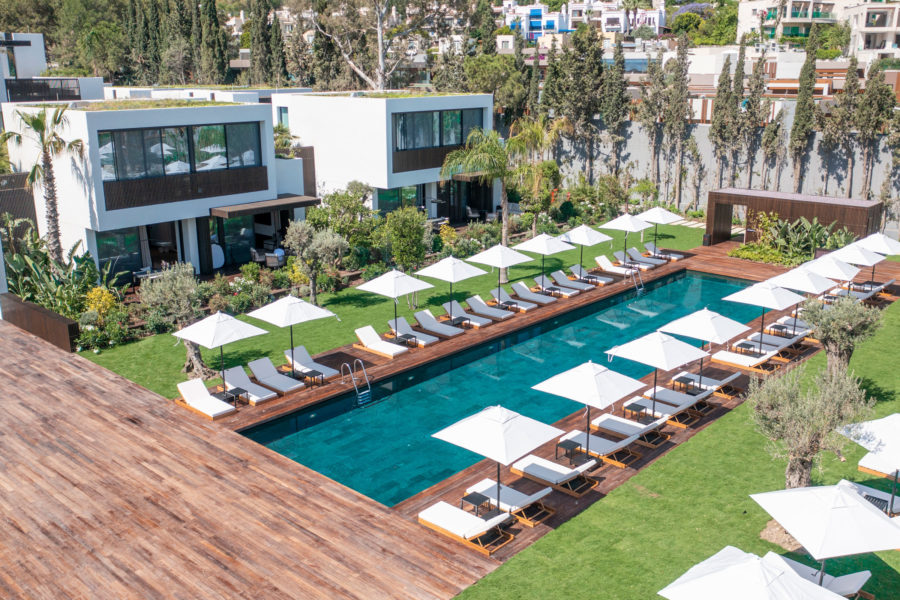
Photo courtesy of G Wood Products
As a result of the ThermoWood process, the chemical structure of the wood changes. Removing moisture and organic compounds leaves the wood extremely reliable, Zenginler says. In fact, ThermoWood Ash becomes strong as IPE, a South American species of wood commonly known as the iron wood. It’s much lighter than IPE, too.
2. It’s incredibly stable.
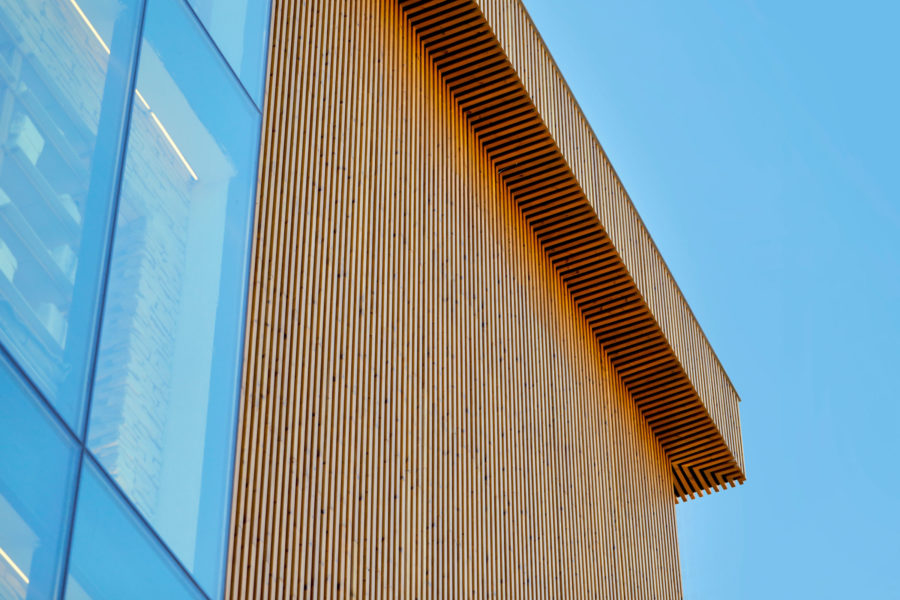
Tantimber is great for cladding, decking, flooring, beams, and more. Photo courtesy of G Wood Products
Because of the low moisture content, it doesn’t interact with its environment the same way traditional wood does. Namely, it doesn’t absorb moisture from its surroundings as much. The maximum moisture content will be around 13%, which is nearly enough to change its stability.
“It doesn’t warp, swell, or shrink,” Zenginler says. “Even in extreme weather conditions or when used in different applications, like for saunas or docks on the ocean, it’ll keep it stability.” And because thermally modified wood is resistant to moisture, it’s also resistant to rotting and molding and won’t become a home to bugs or fungi.
3. Thermally modified wood is natural and chemical-free.
Thermally modified wood is made, as the name suggests, from one all-natural material: wood. And Tantimber’s thermal modification process ensures it stays that way.
“We simply remove excess moisture and harmful extractives—that’s all. No chemicals are used, no treatment is applied on the surface, and it doesn’t require any special treatment before or after installation. It’s completely nontoxic.” Zenginler says.
Tantimber’s thermally modified wood has a beautiful brown tone that naturally weathers over time to a beautiful silver-gray patina if the wood is left untreated with pigmented and UV-protected wood oil.
4. It offers design flexibility.
- Nidapark Kayasehir in Istanbul features thermally modified wood from Tantimber. Photo courtesy of G Wood Products
- Photo courtesy of G Wood Products
Tantimber offers more than 15 product profiles. Siding, decking, pergolas, beams, decorative interior wall coverings, and more—thermally modified wood is versatile and fit for any design that wants the look and feel of wood without the fear of heavy maintenance or replacement.
Thermally modified wood is made from hardwoods and softwoods. During the modification process the timber is transformed into beautiful golden and chocolate browns that can be used across applications. Its long-lasting, high-performance beauty brings depth to terraces, gardens, bathrooms, walkways, and landscape architecture with decking solutions produced from ash, pine, and iroko.
5. It’s sourced sustainably.
“Sustainability and quality are our number one priorities,” Zenginler says. “Our products are FSC- and PEFC-certified. They are chemical-free, nontoxic, eco-friendly, and 100% recyclable.”
Tantimber only sources wood from sustainably managed forest across the US, Finland, and Cameroon. “We believe the planet we live in must be protected by all people and institutions, as it’s a home to all living creatures—not just humans. The raw materials that are used to manufacture ThermoWood products are obtained from responsibly managed and sustainable forests only.”
6. Thermally modified wood has a long lifespan.
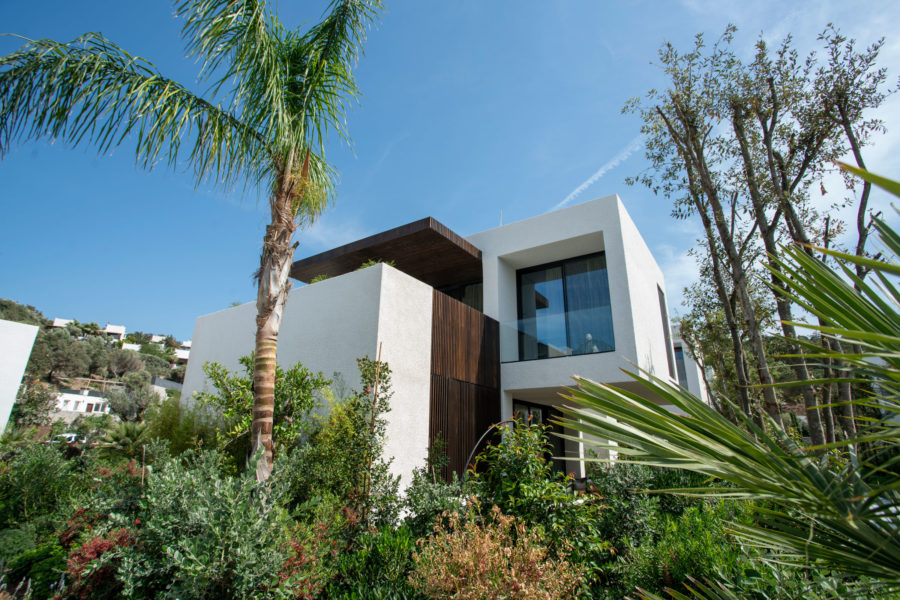
Photo courtesy of G Wood Products
Because of its durability, some species of thermally modified wood, like ash siding, can last upwards of 60 years. “It’s an investment. With thermally modified wood you can design something that will give you a piece of mind your whole life,” Zenginler says.
And because of its longevity, thermally modified wood adds another layer of sustainability to projects, as there is less need to replace the material every few years. If it does need to be removed, Tantimber’s thermally modified wood is fully recyclable.
Using thermally modified wood is an opportunity for any architect or designer to distinguish themselves with a better quality, sustainable product that is produced with a passion for the environment.”

